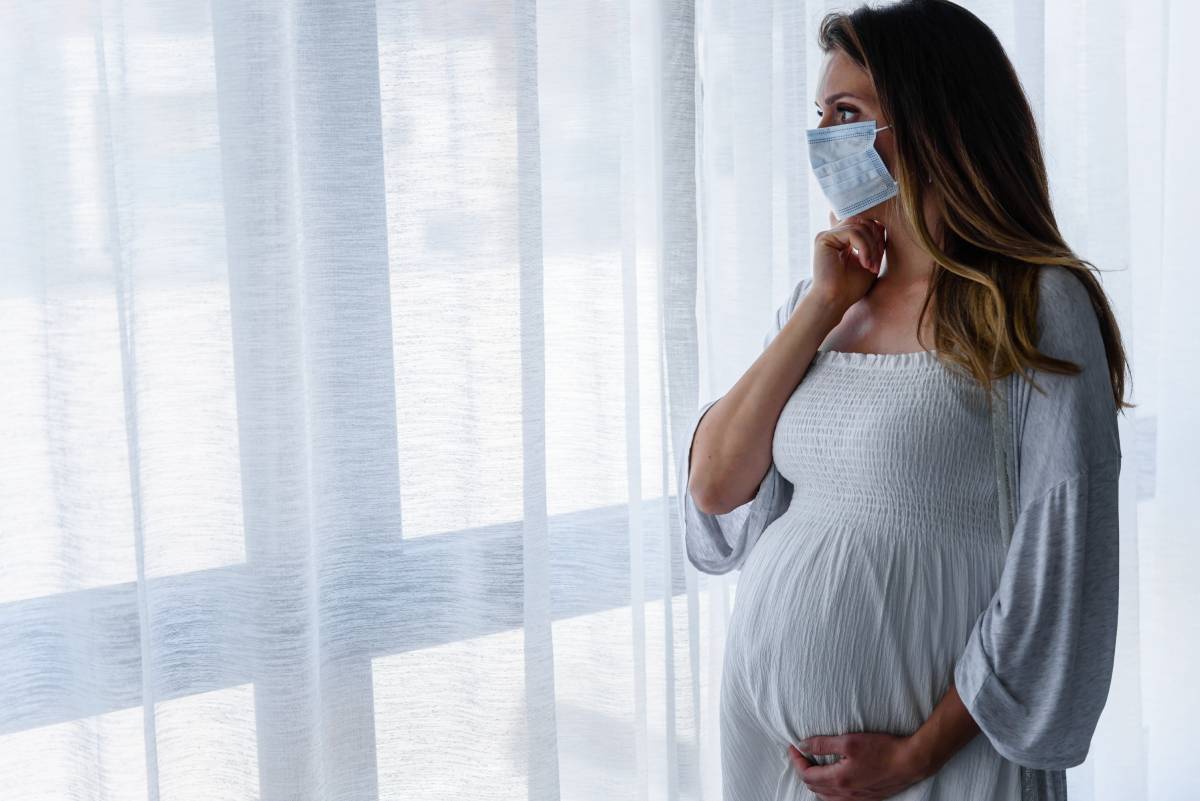The Impact of COVID-19 on Pregnant Women

Maternal physiological changes impact the immune system, the respiratory system, cardiovascular function, and coagulation [1]. Existing information shows that pregnancies can be complicated by certain coronavirus infections, such as Severe Acute Respiratory Syndrome (SARS) and Middle Eastern Respiratory Syndrome (MERS), which initially led to pregnant women being considered especially vulnerable to severe SARS-CoV-2 infection [1]. However, recent reports have suggested that pregnant women do not appear to be at a higher risk of contracting COVID-19 or experiencing more severe disease progression than non-pregnant adults of similar age [2].
Between March and December of 2020, it is estimated that 16,601 pregnant women in the United States received a positive COVID-19 test [3]. In certain regions of the world, up to 15% of pregnant women were found to have a positive COVID-19 test result upon admission for delivery [4]. Fever and cough are the most common symptoms in pregnant women with COVID-19 [2]. Other symptoms include dyspnea, diarrhea, and malaise [2]. Current data has shown a similar rate of intensive care unit (ICU) admission compared to non-pregnant women but higher incidence of preterm and cesarean delivery [2]. Thus far, COVID-19 appears to result in less severe maternal pregnancy outcomes than SARS or MERS [2]. The case fatality rates for SARS and MERS were 25% and 27%, respectively, compared to only 1% for COVID-19 [2].
Major concerns of pregnant women with COVID-19 involve the possibility of vertical transmission, fetal abnormalities, and adverse maternal health outcomes [4]. Vertical transmission occurs when the virus is able to reach fetal organs and can be detected in fetal tissues [3]. The presence of SARS-CoV-2 in the placenta is not considered vertical transmission [3]. A systematic review published in January 2021 concluded that there is no evidence that the virus can be transmitted to the fetus during pregnancy or during childbirth [2].
To address concerns about maternal health and the possibility of adverse events in utero, numerous professional societies have issued practice statements and guidelines regarding the use of medications in pregnant and postpartum women with COVID-19 [4]. Since both COVID-19 and pregnancy increase the risk of thromboembolic events with associated mortality, current guidelines recommend that all pregnant women with confirmed COVID-19 should receive thromboprophylaxis until 10 days postnatal [1].
The use of three categories of medications has generated debate during the COVID-19 pandemic: antenatal corticosteroids, MgSO4, and non-steroidal anti-inflammatory drugs (NSAIDs) [4]. Antenatal corticosteroids administered between 24 and 34 weeks of gestation in women at risk of preterm birth have been associated with reduced risk of perinatal death and respiratory distress syndrome [4]. MgSO4 has been shown to be effective for prophylaxis and treatment of seizures in pre-eclampsia and for fetal neuroprotection when given to women at risk for preterm birth [4]. Low-dose NSAIDs, such as aspirin, have been recommended as a primary and secondary prophylaxis for placenta-mediated complications of pregnancy [4]. However, there is contention about the use of NSAIDs during pregnancy since they have been linked to higher risk of miscarriage in early pregnancy and fetal pulmonary hypertension after 30 weeks of gestation [2].
References
- Wastnedge, E., Reynolds, R., van Boeckel, S. et al. (2021). Pregnancy and COVID-19. Physiological Reviews, 101(1), 303-318. doi:10.1152/physrev.00024.2020
- Wang, C., Liu, Y., Wu, C. et al. (2021). Impact of COVID-19 on Pregnancy. International Journal of Medical Sciences, 18(3), 763-767. doi:10.7150/ijms.49923
- Hayakawa, S., Komine‐Aizawa, S., & Mor, G. (2020). Covid‐19 pandemic and pregnancy. Journal of Obstetrics and Gynaecology Research, 46(10), 1958-1966. doi:10.1111/jog.14384
- D’Souza, R., Ashraf, R., Rowe, H. et al. (2021). Pregnancy and COVID ‐19: pharmacologic considerations. Ultrasound in Obstetrics & Gynecology, 57(2), 195-203. doi:10.1002/uog.23116
